 This is the second article that features the stage costumes of the “Black Panther” movie characters. In the first one, we talked about the main people of Wakanda; here, we’ll review the outfits of other principal characters and the adorable African style of their clothing. We’ll also share with you the background of these stage costumes and the African tribal outfits that has inspired the costume designers. So, the characters whose attire we’ll review are River Tribe people, Dora Milaje, Okoye, Erik Killmonger, Border Tribe people, W’Kabi, Mining Tribe people, Jabari Tribe people, and M’Baku.
This is the second article that features the stage costumes of the “Black Panther” movie characters. In the first one, we talked about the main people of Wakanda; here, we’ll review the outfits of other principal characters and the adorable African style of their clothing. We’ll also share with you the background of these stage costumes and the African tribal outfits that has inspired the costume designers. So, the characters whose attire we’ll review are River Tribe people, Dora Milaje, Okoye, Erik Killmonger, Border Tribe people, W’Kabi, Mining Tribe people, Jabari Tribe people, and M’Baku.
This material is based on the video from YouTube channel “Costume CO”.
Read also: Gorgeous African traditional dresses used in Black Panther movie. Stage costumes of main characters
Folk African costumes in Black Panther movie display Afrofuturism
Costumes of the River Tribe elder
Pictured here in behind the River Tribe elder, are the Royal Guard that are dressed in purple and gold.
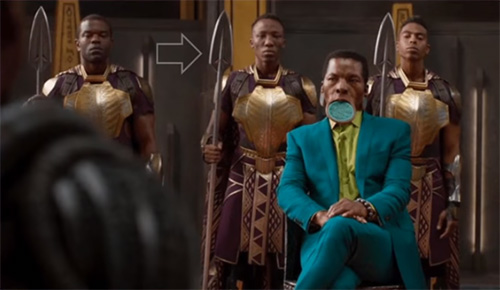
The River Tribe has dominion over the waterways and as such. Their signature color is green.
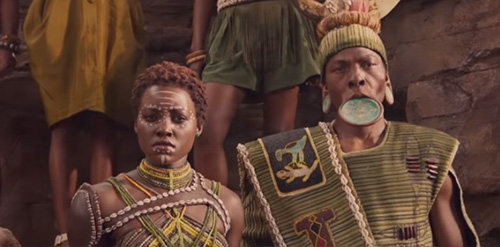
Ruth Carter says, “Green signifies water, a coastal community, leaves and plants. They live in a lush area, as opposed to the perception that Africa is arid and dry”.
Ruth Carter and her team borrowed inspiration from the Mursi tribe, an African peoples who reside in the isolated Omo Valley in southern Ethiopia.
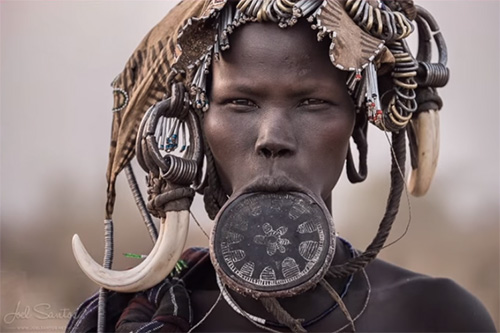
Of the tribe’s elder’s lip plate, makeup designer Joel Harlow said, “We had to clip the plate into the actor’s teeth so it would support the weight of the piece. We did that with magnets – each plate had a lower dental piece that had a little magnet on it. We put the piece in apply makeup around it, so it would look like a lip was stretching around it, and then we blend that into the skin”.
Ruth Carter adds, “The lip plate is mainly used by African women, although men do adorn it, and the bigger the lip plate, the more prominence that you have in the tribe. Usually we see this lip plate in National Geographic on women with no tops who are sitting on the ground, and here he is with his legs crossed and a beautiful suit by the fashion designer Ozwald Boateng. He is bringing so much pride and so much honor to it”.
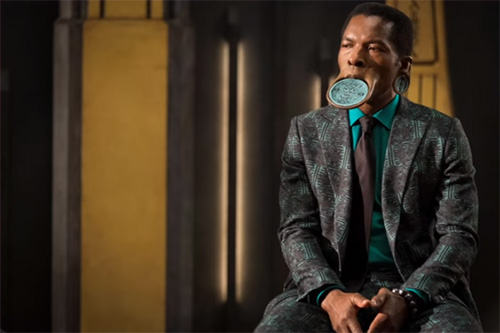
Of the River Tribe elder’s more Afropunk look, Ruth Carter said, “We wanted to connect him to his tribe by giving him his green color, and I remember researching the fashion designer Ozwald Boateng and he has a green suit that has this wonderful tribal print all over it. He said, ‘The fabric is made in Milan and takes six months to hand-make it’. I was like, ‘Seriously? I have two weeks!’ So I just thought, Okay, let me just buy something off the rack. Boateng has such an elegance to his clothes, and such a beautiful craftsmanship to his work”.
Costumes of the Dora Milaje
The Dora Milaje are an elite group of female bodyguards and Wakandan Special Forces.
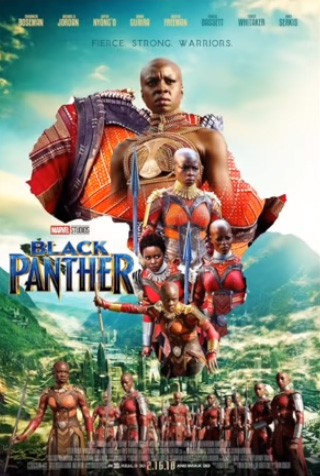
Black Panther costume designer Ruth Carter said, “We wanted to make them have more of a presence, more of a strength of authority. That they did have. They were badass chicks who were protecting the King, until T’Challa, being the Black Panther, is walking around in this skin suit. We didn't want the guy in the skin suit walking around with the girls in the bathing suits. We developed more as a real warrior might be developed”.
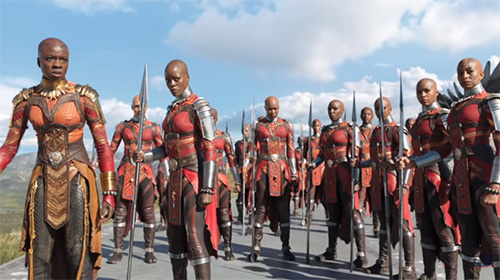
Ruth Carter adds, “Real warriors who need their arms protected and need to have shields, and armor, and weaponry and shoes – like they're going to go to battle. It took us some time to get there because, we all as women, want to be that girl who can fry up the bacon and do all the other stuff. But in the end, it's got to feel empowering”.
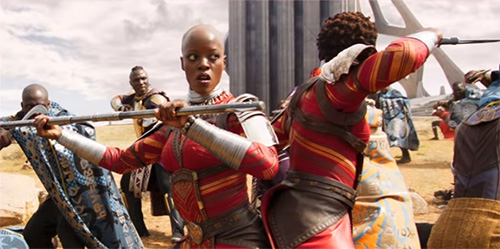
And then Carter said, “We didn't want them to be these sexy girls walking around with a guy in a bulletproof catsuit. We wanted them to be serious fighters”.
According to Ruth Carter, one of the inspirations for the Dora Milaje was the Maasai people who are an indigenous group inhabiting Central and Southern Kenya and Northern Tanzania. The costume designer incorporated the vibrant red color of their “shuka blankets”, typically red-striped, although colors like blue and pink with other patterns, like plaid, are also common.

And Ruth Carter said, “This brilliant red is a consistent color in Africa, so I upped the ante on the tone. I wanted it to be almost like an intimidating red, just intense and saturated”.
Like the Dora Milaje, head-shaving is a common rite of passage of the Maasai, including for the women during different stages of her life. Only Maasai warriors have long plaited hair.

Beadwork has a long history with the Maasai women whose identity is embodied in their beadwork. Here are two examples. On the left, is a Kenyan beadwork belt that dates between 1870-1929 and it's made from skin, plant, glass bead, and mineral pigment. And on the right, is a beaded Maasai necklace that's also from Kenya. And both of these items are on display at the Textile Museum of Canada.

The Dora Milaje harness and tabard is intended to be an heirloom piece that would be handed down through generations.
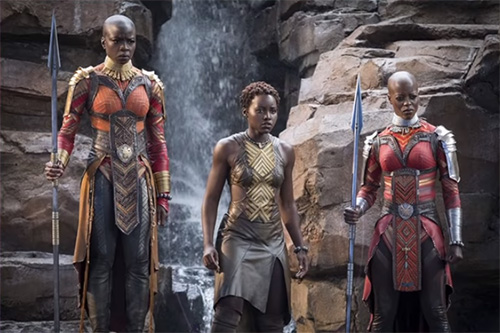
Ruth Carter said of this, “Just like you would see a samurai uniform, their uniform needed to also have the hand-crafted element to it so that it felt like something that had been around for centuries, that the uniform was passed out to them and they could pass it down to their children”.
Ruth Carter also adds, “I put little talismans on them, and you can see them in this picture. I felt like each girl could have something on her tabard that personalized it for her, and maybe represented the tribe that she came from: some of them might have a fertility doll, a piece of amethyst, or a piece of jade”.
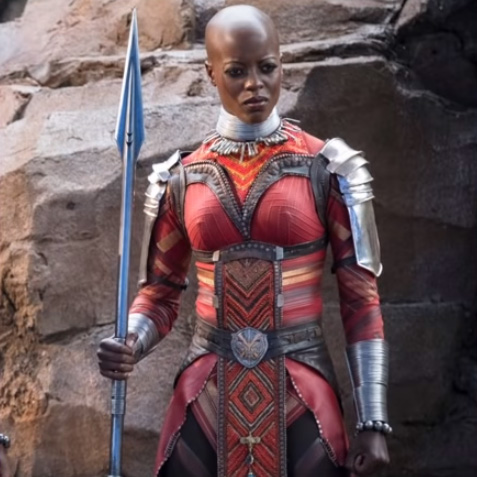
According to Ruth Carter, director Ryan Coogler wanted the silver armor to look like jewelry, so Carter and her team, headed up by jewelry designer Douriean Fletcher, made sure that it had a brilliant shine. According to the New York Times, one of the major costume fits Fletcher assisted with, was in helping to create the look of the Dora Milaje. And although there were specifications in terms of the armored adornments, she was asked to make, Fletcher was still able to bring her own flair to it.
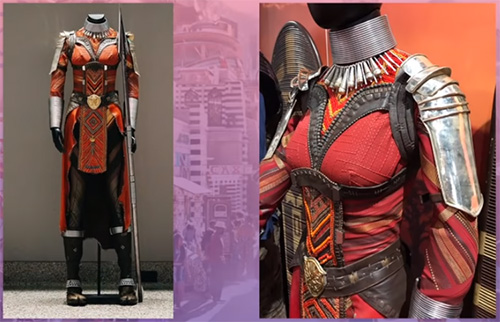
And Ruth Carter states that the silver or metal is meant to represent vibranium.
Here is a panther buckle created by jewelry designer Fletcher. She said in the same Los Angeles Times article, “Ruth showed me what kinds of things Wakanda reflected to her, what it meant to her. So I was able to go off and do some things and bring them back to her. It was just a good match”.
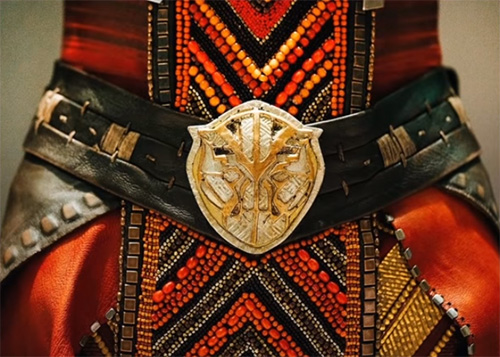
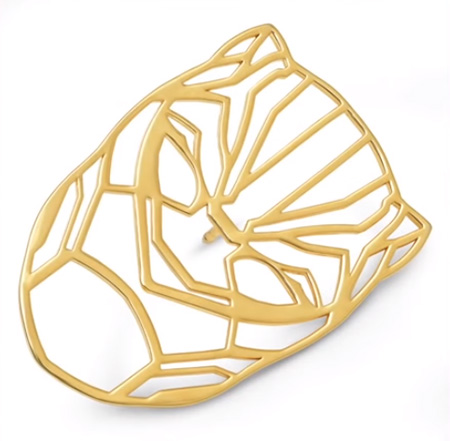
Disney states that the neck rings worn by the Dora Milaje were patterned after the neck rings worn by the women of the Ndebele tribe. For shooting purposes however, they were remade in rubber.
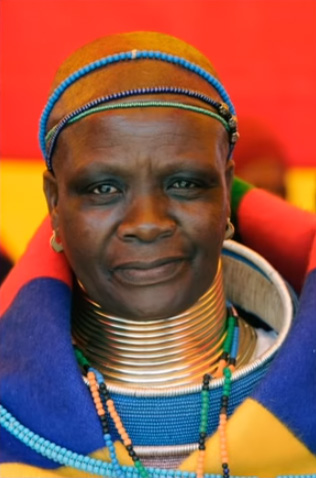
In the Ndebele practice, the copper or brass neck rings are called “idzila” and are said to represent a myriad of things. The idzila was historically worn by married women and only after they have been built a home by their husbands.
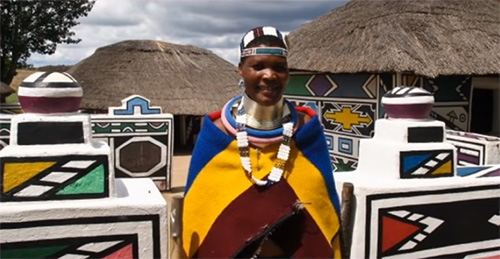
The Dora Milaje also wear ring bracelets. Here's an example of a 19th-century Maasai bracelet from the Metropolitan Museum in New York.

Ruth Carter said, “This tabard that falls down the front of the body needs to have some kind of meaning. Just like the samurai warriors that hand down their armor that stands the test of time for centuries, I felt like there needed to be a little bit of that in the spirit of this costume”.
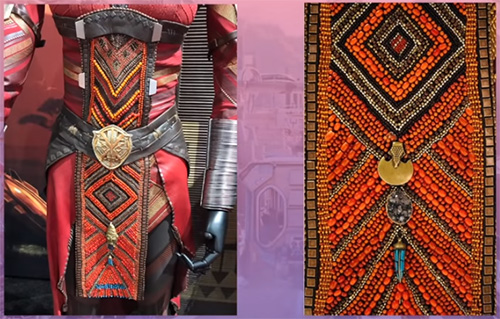
In Zulu culture, for instance, they use beadwork as a form of communication, using color and shapes to send their messages. And Carter states that the beadwork on the tabard, meanwhile, is inspired by the Turkana tribe.
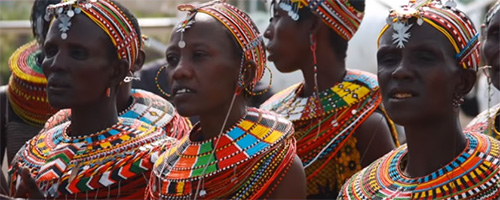
The Turkana tribe is a nomadic pastoralist people that inhabit the Turkana district in Kenya's Rift Valley province. Their brightly-beaded necklaces are very heavy and can weigh about 3 kilograms. Shoulders are further accentuated by large beaded collars, overhangs around the neck.
Like the Maasai tribe, the Turkana also create beaded jewelry, like this beaded necklace from Kenya that dates between 1970-1989. The necklace is made from sisal, glass beads, and skin.
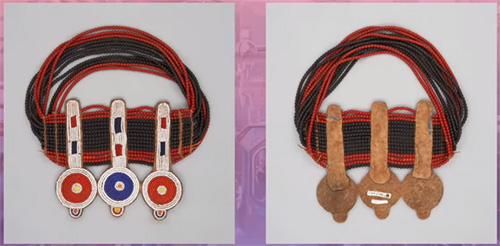
Here are two other Turkana pieces from Kenya. On the left, we have a late 20th-century apron made from goatskin, plant, glass beads, and mineral pigment. On the right, is a beadwork belt from Kenya dating from the mid to late 20th century; it's made from plant, glass beads, skin, and mineral pigment.
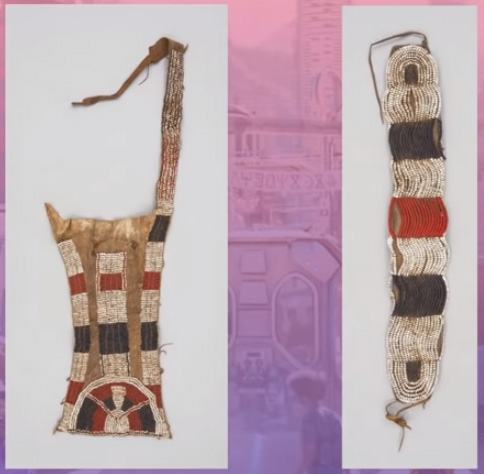
And all of these pieces are also from the Textile Museum of Canada.
Ruth Carter says, “When the Dora Milaje come on the set, you can hear them coming, and it's exciting, we were learning as we were going. We needed to present another female warrior that was fully clothed with her vitals protected. She's really, truly ready for battle”.
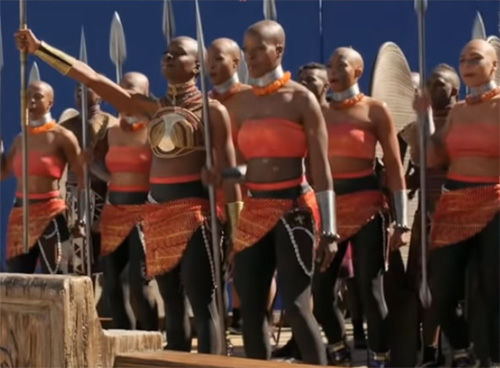
And then Ruth Carter says, “All those layers of their relationships are represented in the costumes. Mother/Queen, General/Girlfriend, Spy/Ex-Girlfriend, Sister/Genius. I think, in general, there's a sense of royalty and esteem with the female uniforms. They have no past and we made them with a specific story in mind. It loops you into Wakanda. They are hand-crafted by the Merchant tribe or some other faction that only makes Dora red uniforms”.
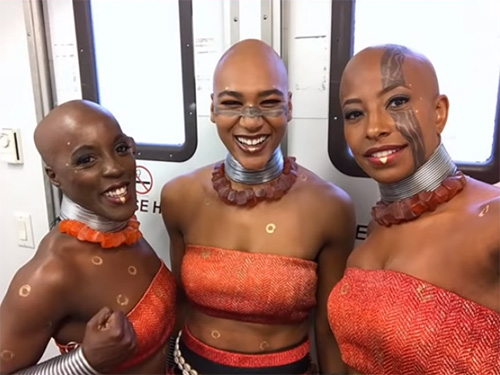
Costumes of Okoye
Okoye is the head of the Dora Milaje, the all-female Wakandan special forces. Okoye wears gold armor to indicate that she is the leader of the Dora Milaje.
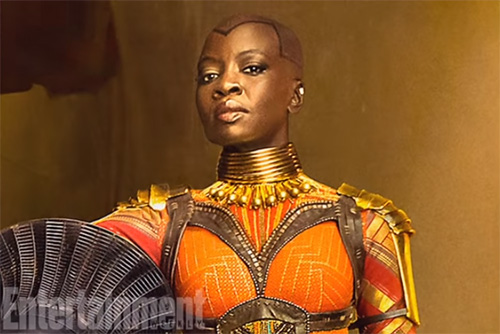
Makeup artist Ken Diaz tells Teen Vogue that he designed Okoye’s head tattoo to resemble the shape of a fighter pilot’s helmet, with triangular outlining that would very much complement the amazing costume design.
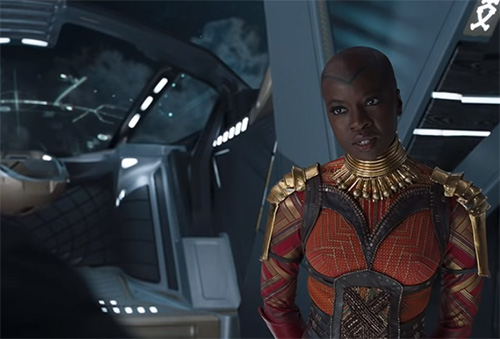
And makeup artist Tym Buacharern adds, “I wanted to keep her looking feminine yet strong. I gave her cat eye makeup to show her devotion to Black Panther, strong contour and, sheer red lips”.
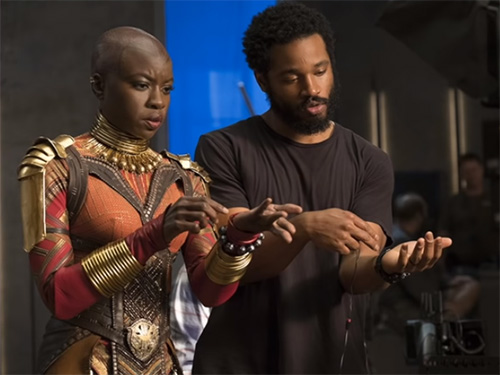
Ruth Carter says that you can see that she has jewelry draping down the front part of the skirt. She is truly a decorated general. Meanwhile, the brown leather harness, seen here, is meant to look hand-tooled by the same craftmakers of Wakanda that would have made the queen's costume. The harness beautifully falls the shape of the body, accentuated by the beaded lines of the undertunic.
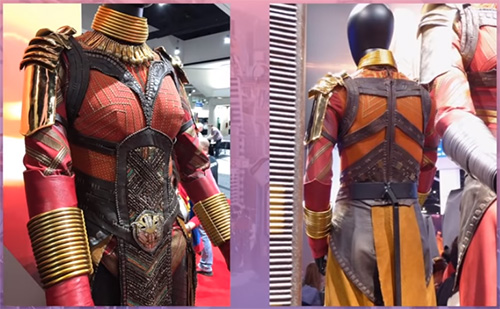
Okoye’s dress is crimson red, the color of the Dora Milaje, and the bodice is incorporated with gold to symbolize her rank.
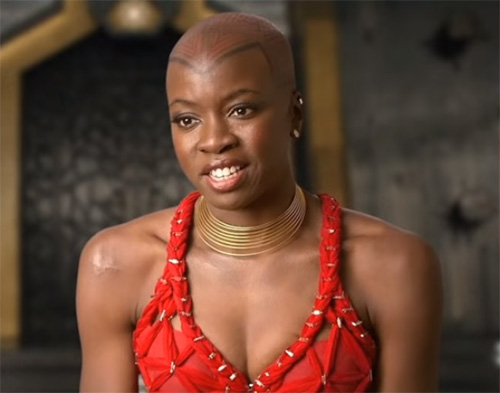
Here is a close-up of the top and bottom of the dress. Ruth Carter said, it took a lot of R&D to develop that dress because she had to perform in so many ways. And in an interview with Collider, she said that the dress was one of the first designs she had done and it took about three months to complete.
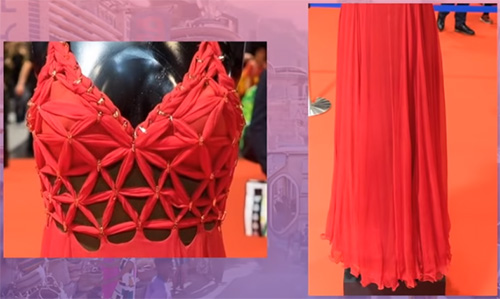
Costumes of Erik Killmonger
Erik Killmonger is a new man in Wakanda with desires on the throne. Like Ryan Coogler himself, Killmonger is from Oakland, California.
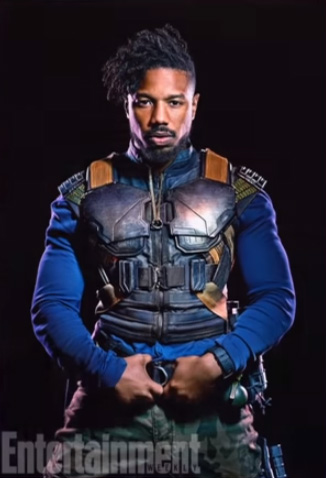
So Coogler drew upon his personal fashion knowledge. Ruth Carter stated that “Killmonger represents urban America and wears Balmain boots and drop-crotch pants and jean jacket with shearling… We gave him some drop-crotch pants because Ryan Coogler loves a drop-crotch pant”. She adds, “We've never seen Michael B. Jordan wearing eyeglasses like that! Ryan Coogler went to the moon every time he saw him in these glasses – he would just laugh. You could just see by the look on his face that he felt it was so right”.
Ruth Carter said, “Part of his past is military with tactical vest, pants, and jacket. There's so much Americana in his costume and it really does play him opposite of T’Challa”.
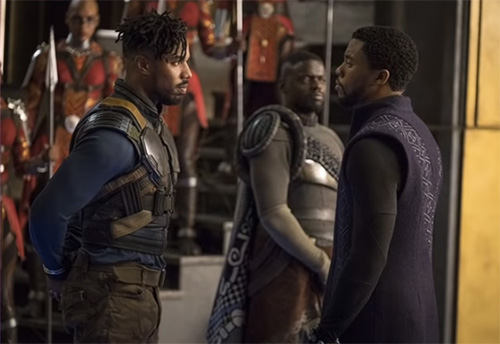
Here's a close-up of his tactical vest before aging and painting. And a nice design detail is the incorporation of this African webbing in place of the standard black and gray.

Killmonger’s torso was covered with hundreds of scars. The men of the Sury tribe in Ethiopia scar their bodies to show they've killed someone from an enemy tribe. The scarification of actor Michael B. Jordan’s torso was created by the prosthetics team that was headed up by makeup designer Joel Harlow. According to Disney, Harlow and three other makeup artists applied close to 90 individually sculpted silicone molds to his upper body. This scarification application process entails transferring each mold and then blending and painting them to match Jordans skin tone. Each of Killmonger’s scars represents a notch of his kills over the years.
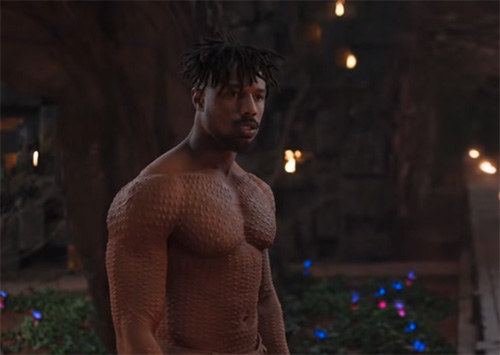
Costumes of the Border Tribe
The people of the Border Tribe live on the borders of Wakanda and serve as the first line of defense for the country. They are immediately recognizable because of their brightly blue cloaks. The Border Tribe elder, seen here on the left, is wearing a Lesotho-inspired heart-shaped drape over his head.
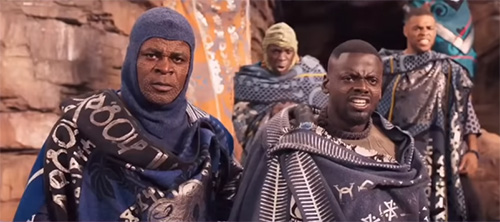
These hats are worn in winter by the Basotho, a Bantu ethnic group whose ancestors have lived in South Africa since around the 5th century.
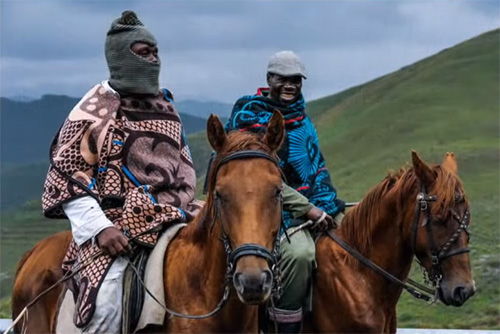
Ruth Carter said, “The Lasotho do these wonderful blankets with these amazing prints on them that represent their king, they represent harvest. And we screen-printed on the other side with vibranium, silver Adinkra symbols, so that their blankets could be used as shields during fighting. We worked on those blankets from start to finish”.
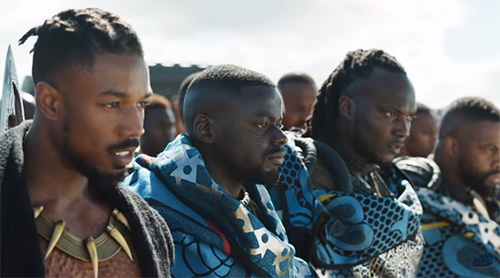
You can see that the screen-printed silver that's meant to represent the vibranium. And Ruth Carter also said that director Ryan Coogler spent time with the Basotho and even got their blessing to use their blankets in the movie “Black Panther”.
Here are the blankets worn by the Basotho.

According to the Aranda, the sole sellers of the heritage blanket, traditionally Basotho blankets are manufactured from wool which offers protection from the wind and rain and provides warmth in the high altitude of the mountain kingdom.
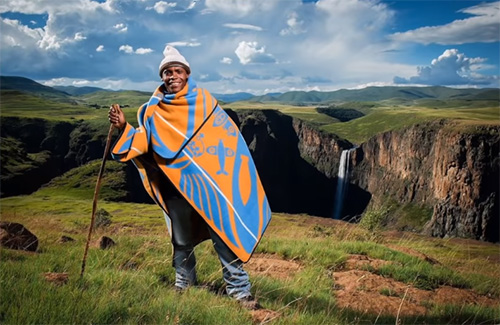
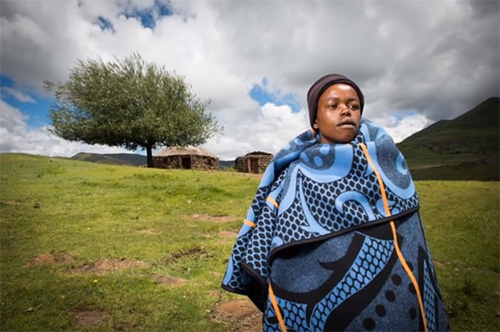
Here's a picture of one of the blankets from Aranda’s online store. This heritage blanket is from the family Seanamarena in the Poone design.
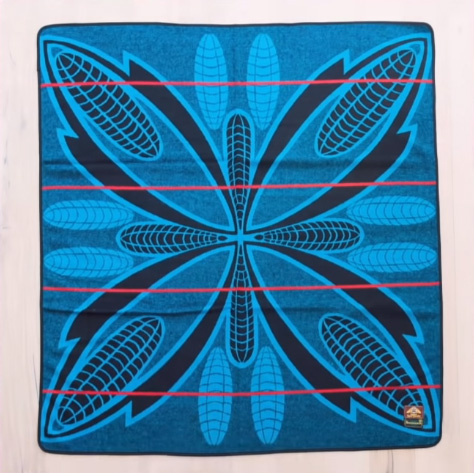
According to Aranda, the corncob is the most widely used motif throughout the range of the Basotho heritage blankets. In Basotho culture, maize is the staple food and therefore, the corncob is a symbol of fertility and wealth.
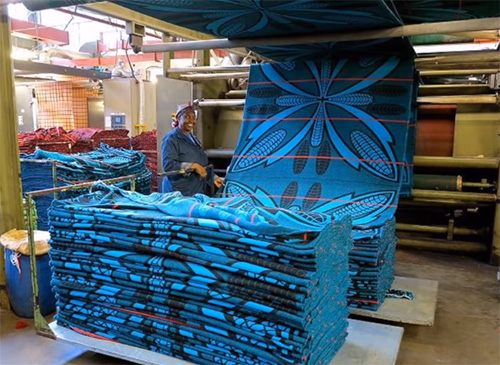
The more prestigious Seanamarena designs feature more corncobs than the everyday wearing blankets.
Costumes of W’Kabi
W’Kabi is the head of security for the Border Tribe and a close friend of T'’Challa.
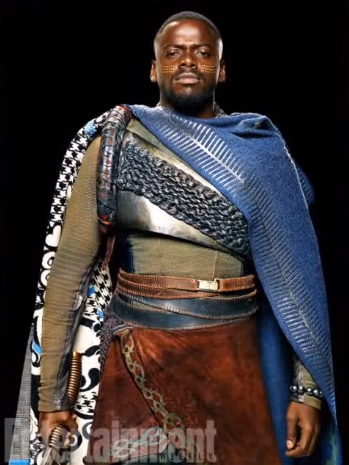
W’Kabi is wearing this overcloak that is screen-printed with silver Adinkra symbols. And under that, he's wearing a Basotho blanket that looks like this Motlatsi family blanket in the Khosana design.
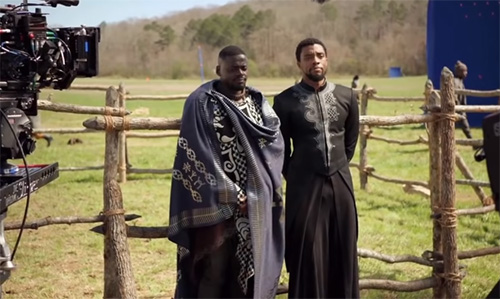

And in case you're wondering, these blankets they sell for about 883 rands which works out to about 73 U.S. dollars.
Makeup designer Harlow stated that the Border Tribe’s scarification, as seen here on W’Kabi’s face is based upon the Mursy and Bumi tribes of Ethiopia.

Costumes of the Mining Tribe
The Mining Tribe is solely responsible for the mining of vibranium in Wakanda. Their signature colors are orange and red, similar to the Turkana tribe.
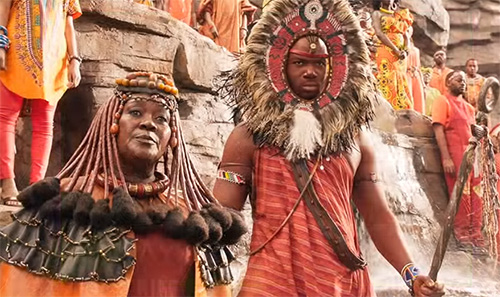
The Mining Tribe elder’s headpiece was inspired by the Maasai tribe, which is the same tribe Ruth Carter's team used as inspiration for the Dora Milaje. And Carter has said that she beaded the mask herself.
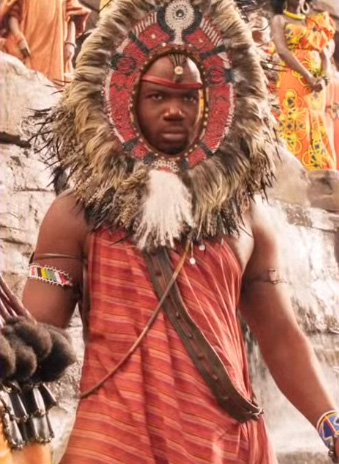
And his drape is just a cloth that's knotted on the shoulder.
According to Ruth Carter, the bigger the feathers that surround the crown are, the more fierce of a warrior that you are. And these Maasai headdresses are made from ostrich feather plumes.
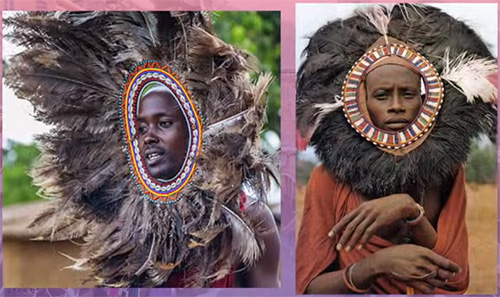
The Mining Tribe elder wears a Himba tribe inspired wig, covered in a paste made from ochre and shea butter. Ruth Carter used this crown that we see here – it was actually a piece she had as inspiration for the series “Roots”, which was a 2016 miniseries that she was costume designer for.
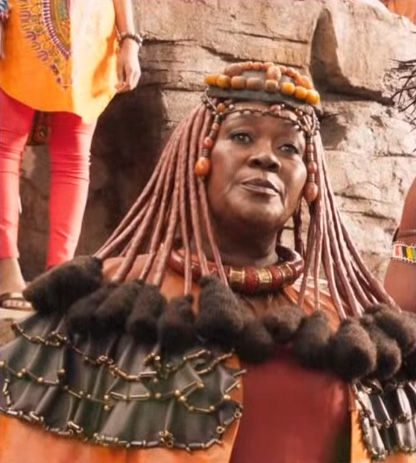
The Ovahimba are a relatively small group of indigenous peoples, considered the last semi-nomadic people living in Northern Namibia. Himbo women cover their plaited hair and skin with otjize paste which is a terracotta-colored cosmetic. The paste both cleanses and protects their skin from the extremely hot and dry climate, and over time, the otjize flakes off, removing dirt and dead skin.
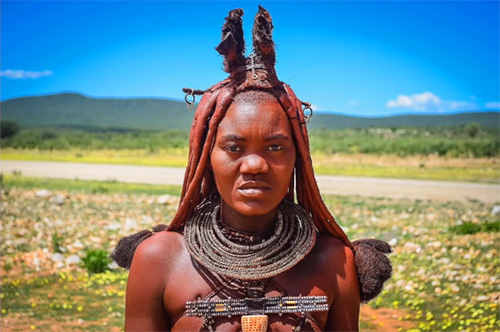
Costumes of the Jabari Tribe
The Jabari Tribe are traditional Wakandans who shun the use of vibranium and live in relative isolation in the mountains. The Jabari Tribe adhered to traditional customs which include worshipping the God Gorilla Hanuman.
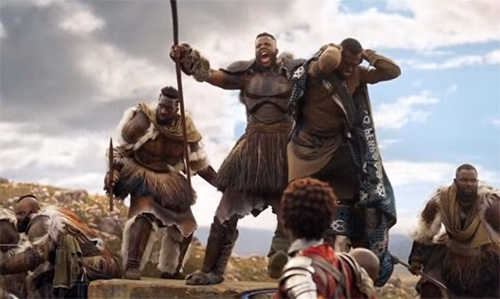
Ruth Carter says, “I used ancient African history to come up with some of these ideas. For example, the Dogon tribe is one of the inspirations for the Jabari tribe in Wakanda. They wore these wonderful raffia skirts during the celebration they perform once a year”.
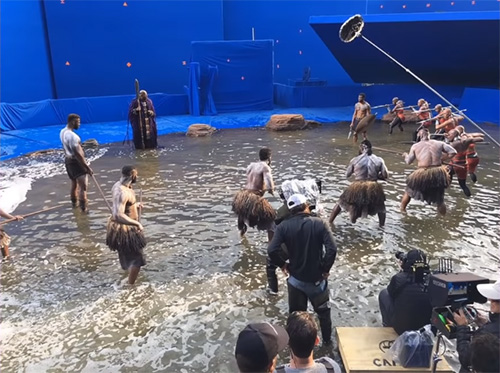
Dogon are an ethnic group living in the Central Plateau region of Mali in West Africa. According to Focus on Geography, Dogon dancers wear regalia worn during Dama performance, designed to enhance movements, such as colored hibiscus fibers attached to the wrists and ankles. Decorations may also include breastplates made from shells (which is a former currency by the Dogon people) and beads worn above loose pants. Colors used within regalia represent the 4 basic elements: red for fire, black for water, white for sky, and yellow or ochre for earth.
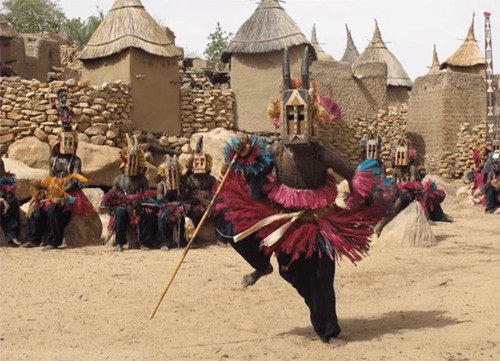
Ruth Carter says of the Dogon people, “They were the first astronomers, and they were very much on the outskirts of the rest of the country, like the Jabari”.
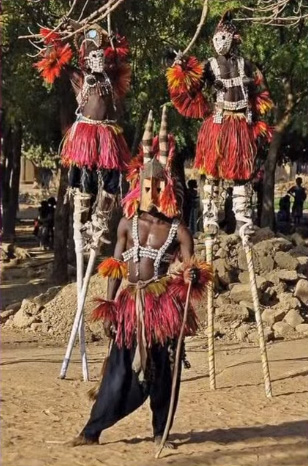
Here is a Mali masquerade vest and overskirt. Unfortunately, the picture is in black and white. It's of the Dogon culture from the 20th century. The skirt’s made from Sansevieria fiber which is more commonly known as a “snake plant”, while the vest is made from cotton, cowry shells, and glass and plastic beads.
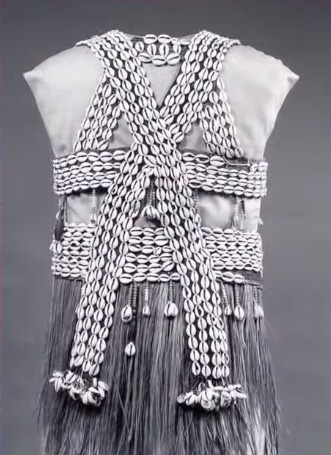
Here are two Mali Dogon ceremonial masks from West Africa from the 20th century. The looped embroidered one on the left is made from plant fiber or material, cowry shells, and glass beads, while the basket-woven mask on the right is made from plant, glass beads, and cowry shells.
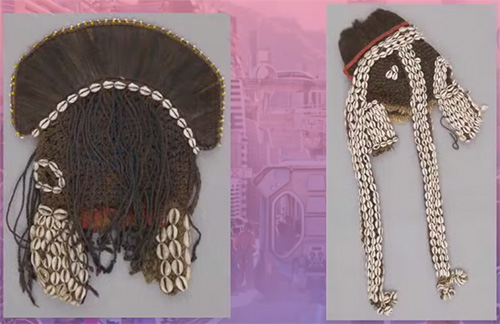
Costumes of M’Baku
M’Baku is the leader of the Jabari Tribe.
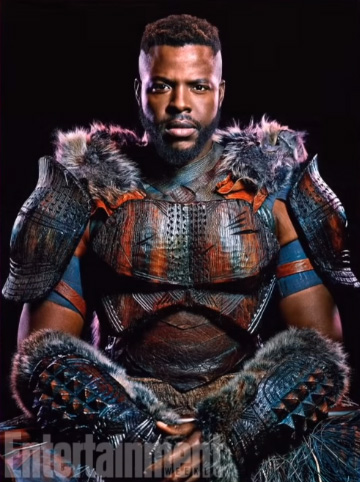
In a Vulture interview, Ruth Carter says that M’Baku’s comic-book origins “was pretty derogatory and racist, and we didn't want to go there, but we wanted to honor that he was Man-Ape. So instead of making his face look like an ape like the comics did, the fur that he has on his shoulders that prominently covers his back is silvery in tone, and represents the silverback ape”.
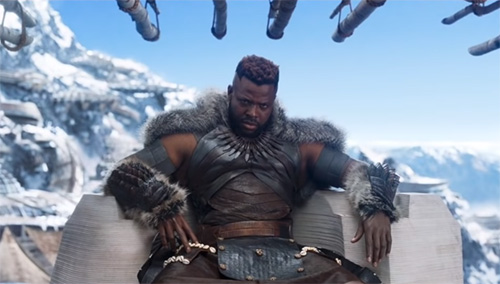
M’Baku only wears his gorilla mask for a short stint during the challenge duel.

Ruth Carter trimmed M’Baku’s leather outfit with cowry shells to signify his wealth since shells were a form of currency for many years in Africa. And in the scene, M’Baku wares carved wooden forearm covers, lined in fur and embossed with pyramid studs that give him this sort of like gladiator quality. And notice that the front of his leather tunic is shaped with chevrons, which is the common pattern that we see throughout Wakanda.
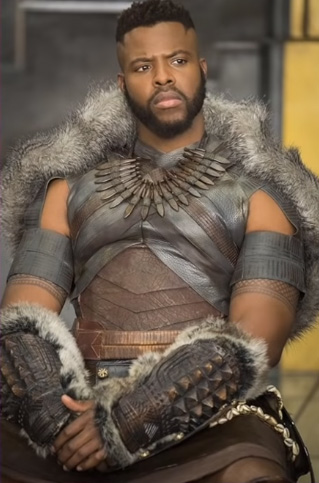
Here's a picture of M’Baku’s costume from an exhibit. His wooden weapons seen here is referred to as a knobkierie, which is a traditional weapon of South Africa.
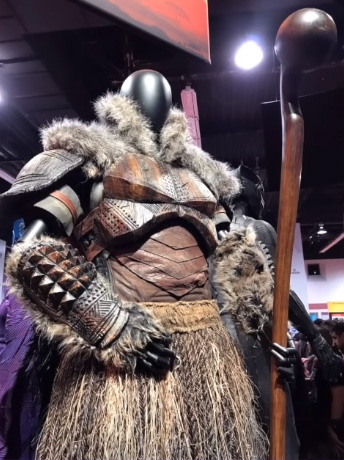
In this great close-up of his costume, you can see his grass skirt on the left – that looks like it might be made from hemp. And then on the right, his carved wooden breastplate and forearm guards. And notice that these pieces are etched with symbolism like the great many costumes that we've seen in Wakanda.
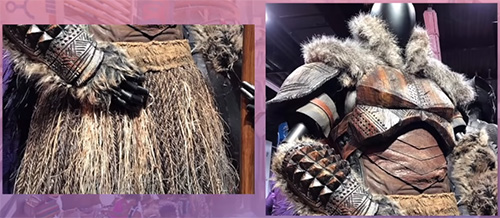
Read also: Gorgeous African traditional dresses used in Black Panther movie. Stage costumes of main characters
Folk African costumes in Black Panther movie display Afrofuturism
(c)


